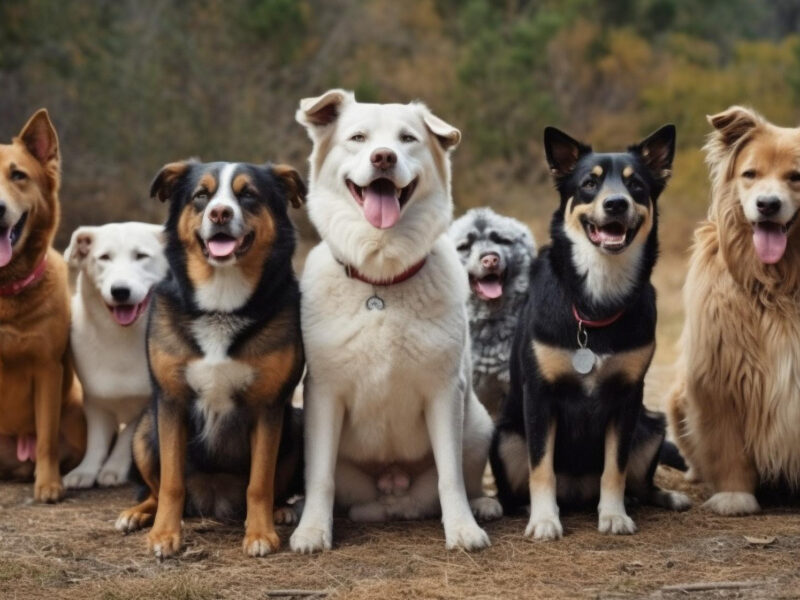Hey there, dog lovers! If you’re on the hunt for the perfect furry addition to your family, you’ve come to the right place. Today, we’re diving into the world of the top family dogs. These breeds aren’t just pets; they become a part of your family with their loyalty and friendliness. We’ll explore why certain breeds stand out and what makes them the go-to choice for families. Get ready to meet your new best friend!
Why Choose a Family Dog?
Hey there, potential pup parents! Are you considering adding a furry friend to your family mix? Here’s why a family dog might just be the perfect choice for your household. Family dogs bring more than just wagging tails and playful antics; they infuse your home with laughter, love, and yes, a delightful dose of chaos. But it’s not just about the fun and games; these canine companions play a pivotal role in enriching the family dynamic in several ways.
Unconditional Love and Emotional Support
A family dog provides unconditional love and support. On days filled with joy or moments brimming with challenges, your dog will always be by your side, offering comfort without judgment. This emotional support can be particularly beneficial for children, teaching them empathy and providing a constant friend through all of life’s ups and downs.
Encourages Physical Activity and Health
Having a dog can significantly boost your family’s physical activity levels. Whether it’s daily walks, trips to the park, or playful backyard sessions, everyone gets moving. This not only helps in maintaining physical health but also promotes mental well-being by reducing stress and anxiety.
Boosts Social Skills and Responsibilities
Dogs are great socializers and can help family members, especially children, develop better social skills. From learning to share to understanding the needs of others, dogs give kids the chance to nurture their emotional intelligence. Additionally, involving kids in caring for a pet fosters responsibility and teaches them about commitment and the importance of routine.
Enhanced Security
A family dog can provide a sense of security. Known for their loyalty and protective instincts, dogs often act as natural guardians for their homes and the people they love. Even the presence of a dog can deter potential intruders, making your home safer.
Choosing the Right Breed
But here’s the kicker: not all dogs fit every lifestyle or living situation. That’s why choosing the right breed is essential. Consider your family’s activity level, the size of your living space, and the amount of time you can dedicate to grooming and exercise. Whether it’s a high-energy Labrador Retriever or a laid-back Bulldog, matching a dog’s needs with your family’s capacity is key to a harmonious home.
In sum, a family dog isn’t just a pet; it’s a heartwarming addition that grows with your family, offering a unique blend of friendship, lessons, and love. Ready to embark on this rewarding journey?
Top Family Dog Breeds:
- Golden Retriever: The Friendly Companion Golden Retrievers are synonymous with a friendly demeanor and a tolerant attitude. They are patient, which makes them excellent for kids. Plus, they’re eager to please and easy to train.
- Labrador Retriever: The Loyal Buddy Labs are one of the most popular breeds in the United States for good reason. They are protective, playful, and reliable. Labs are well-suited for a variety of activities, from fetch to swimming.
- Beagle: The Merry Little Hound Beagles are curious and friendly. They are great with kids and have a compact size that makes them a good fit for smaller homes. They require some exercise to keep them from getting bored but will be your sidekick for all family adventures.
- Bulldog: The Gentle Couch Potato Bulldogs are gentle and love to snooze by your side. They are low-energy, which makes them great for less active families, but they love their food, which means their diet needs careful managing.
- Poodle: The Smart Aristocrat Poodles are incredibly intelligent and gentle. They come in three sizes (standard, miniature, and toy) and are hypoallergenic. They are also energetic and blend well with family activities.
Training and Socialization:
Thinking about how to turn your new puppy into the ideal family dog? It all starts with proper training and socialization. These are not just essential steps in raising a well-behaved pet; they’re your ticket to ensuring your dog can interact safely and happily with your family and the wider world.
The Importance of Early Socialization
Socialization involves exposing your puppy to a variety of people, animals, environments, and experiences during their critical formative weeks—typically up to about 16 weeks old. This period is crucial as it shapes how your dog perceives the world around them. Proper socialization can help prevent behavioral issues such as fear, aggression, or anxiety later in life.
Imagine your dog being calm and friendly when meeting new people or encountering another dog on a walk. That’s the power of early socialization. It teaches them that new faces and places are fun, not scary.
Obedience Training: Building Good Habits
Obedience training goes hand-in-hand with socialization. Teaching your dog basic commands like sit, stay, come, and down is foundational. These commands are not just tricks; they are essential for safety and can make everyday interactions more enjoyable for you and your dog.
For instance, the “come” command can stop your dog from running into a busy street, while “stay” can prevent them from jumping on guests. Each command serves a purpose in helping your dog navigate the human world with ease.
Why Positive Reinforcement Works Best
When it comes to training methods, positive reinforcement is top dog. This technique involves rewarding your dog for good behavior with treats, praise, or playtime, rather than punishing them for undesirable behavior. The goal is to make following commands a positive and rewarding experience.
Positive reinforcement not only strengthens the bond between you and your dog but also encourages them to repeat good behavior. It’s like telling your dog, “Hey, when you do this, great things happen!” This approach is effective because dogs are more likely to repeat actions that lead to good outcomes.
Consistency Is Key
Consistency is crucial in training and socialization. The whole family should be on the same page about commands, rules, and boundaries. If everyone uses the same cues and rewards, it will prevent confusion and help your dog learn faster.
In summary, investing time in training and socializing your family dog pays off immensely. It leads to a well-adjusted dog who behaves well around children, adapts to various situations, and is a joy to have around. Ready to start training? Your furry friend is eager to learn and please you, making now the perfect time to begin shaping a well-behaved and happy family companion
Health Considerations
When you’re adding a new canine member to your family, it’s essential to consider their health needs. Each breed comes with its unique set of health predispositions, and understanding these can help you better prepare for a healthy life together. Here’s what you need to know about keeping your family dog in top shape.
Understanding Breed-Specific Health Issues
Different dog breeds are prone to specific health problems. For instance, large breeds like German Shepherds and Labradors are often susceptible to hip dysplasia, while small breeds like Poodles can suffer from dental issues due to their smaller jaw size. Before selecting a breed, research their common health concerns to ensure you are prepared to manage any potential issues.
Regular Veterinary Care
Regular check-ups with a veterinarian are crucial. These visits are not only for when your dog seems sick but also for preventive care. Routine examinations can catch health issues before they become serious, which can save on medical costs and prevent unnecessary discomfort for your dog.
The Importance of Vaccinations and Preventive Treatments
Vaccinations are vital for protecting your dog from various diseases, including rabies, distemper, and parvovirus, which are often fatal. Additionally, preventive treatments for fleas, ticks, and heartworm are essential as these parasites can cause severe health issues and even death.
Diet and Exercise: Pillars of Dog Health
A proper diet and regular exercise are paramount to your dog’s health. Overfeeding can lead to obesity, which increases the risk of heart disease, diabetes, and joint problems. Conversely, a well-balanced diet can help maintain an ideal body weight and support overall health. Regular exercise not only keeps your dog fit but also mentally stimulated, which is essential for their overall well-being.
Genetic Testing and Health Screening
For some breeds, genetic testing can provide valuable insights into your pet’s health and predispositions. These tests can help you make informed decisions about their diet, lifestyle, and medical needs. Discuss with your vet about what screenings are recommended for your particular breed.
Conclusion
Choosing a family dog is a joyful and exciting time, but it’s important to approach it with an eye towards their health needs. By understanding the breed-specific health issues, ensuring regular veterinary care, keeping up with vaccinations and preventive treatments, maintaining a healthy diet, and considering genetic testing, you can ensure your new furry friend leads a long, happy, and healthy life with your family. Remember, a healthy dog is a happy dog and a wonderful addition to any family



